Samsung is one of the manufacturers who change key components in existing SSD series. At least in Asia, different versions of the 1 TB model of the SSD series 970 Evo Plus (test) are in circulation. A YouTube channel draws attention to the differences.
970 Evo Plus seen with other components
The different versions can be seen in the video on the YouTube channel 潮 玩 客. The 970 Evo Plus 1 TB with the product number MZVLB1T0HBLR and the production date April 2021 has the well-known equipment with Phoenix controller (S4LR020) and 3D-TLC-NAND with the identifier K9DUGY8J5B-DCK0 from the 96-layer generation.

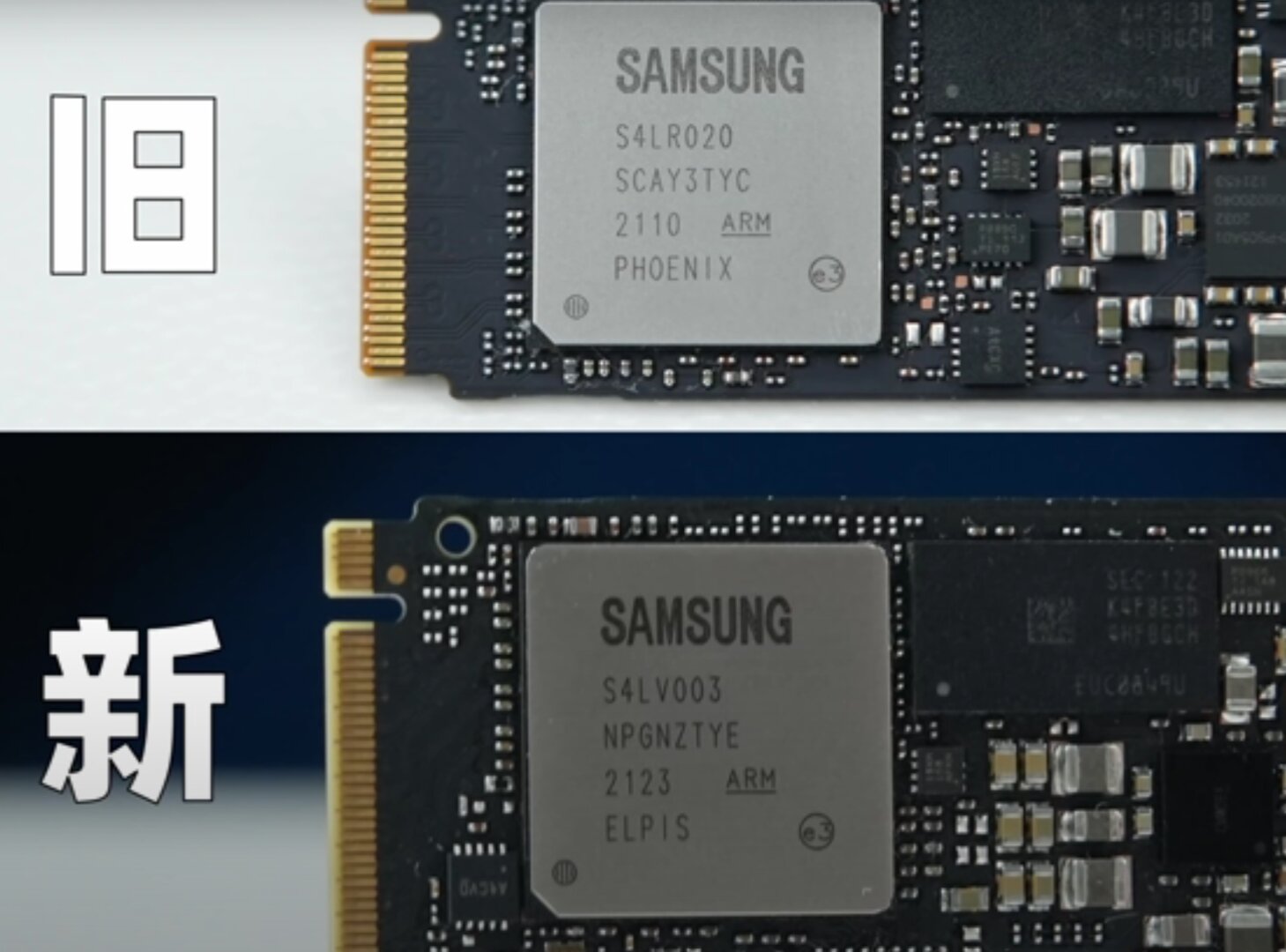 970 Evo Plus: old above, new below (image: 潮 玩 客 (YouTube))
970 Evo Plus: old above, new below (image: 潮 玩 客 (YouTube)) 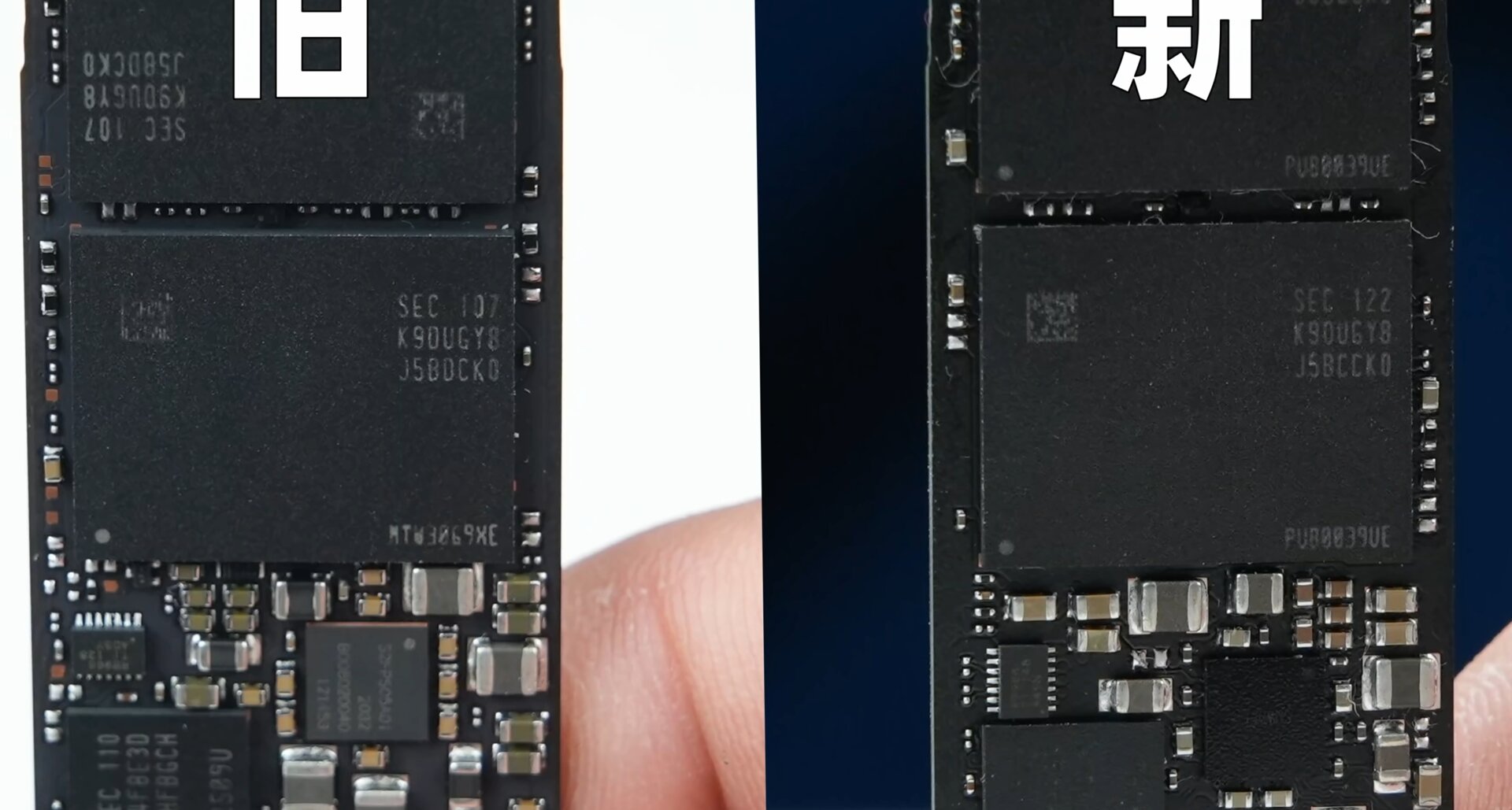 970 Evo Plus: old left, new right (image: 潮 玩 客 (YouTube))
970 Evo Plus: old left, new right (image: 潮 玩 客 (YouTube)) The new and previously unknown version of the 970 Evo Plus 1 TB, on the other hand, has the product number MZVL21T0HBLU and is equipped with the Elpis controller (S4LV003) and 3D-NAND with the identifier K9DUGY8J5B-CCK0. The Elpis controller is known from the younger and faster Samsung 980 Pro (test) and already supports PCIe 4.0 x4, but is backwards compatible with PCIe 3.0 x4, which is the case with the new edition of the 970 Evo Plus. The NAND is also likely to be 96-layer TLC NAND, but in a different package.
 970 Evo Plus with modified hardware (Image: 潮 玩 客 (YouTube) )
970 Evo Plus with modified hardware (Image: 潮 玩 客 (YouTube) ) The packaging of the new version is also different. In the video, pictures and screenshots of the old version are labeled with the number “18”. Another distinguishing feature is the firmware version: the old version is version 2B2QEXM7 and the new version is version 3B2QEXM7.
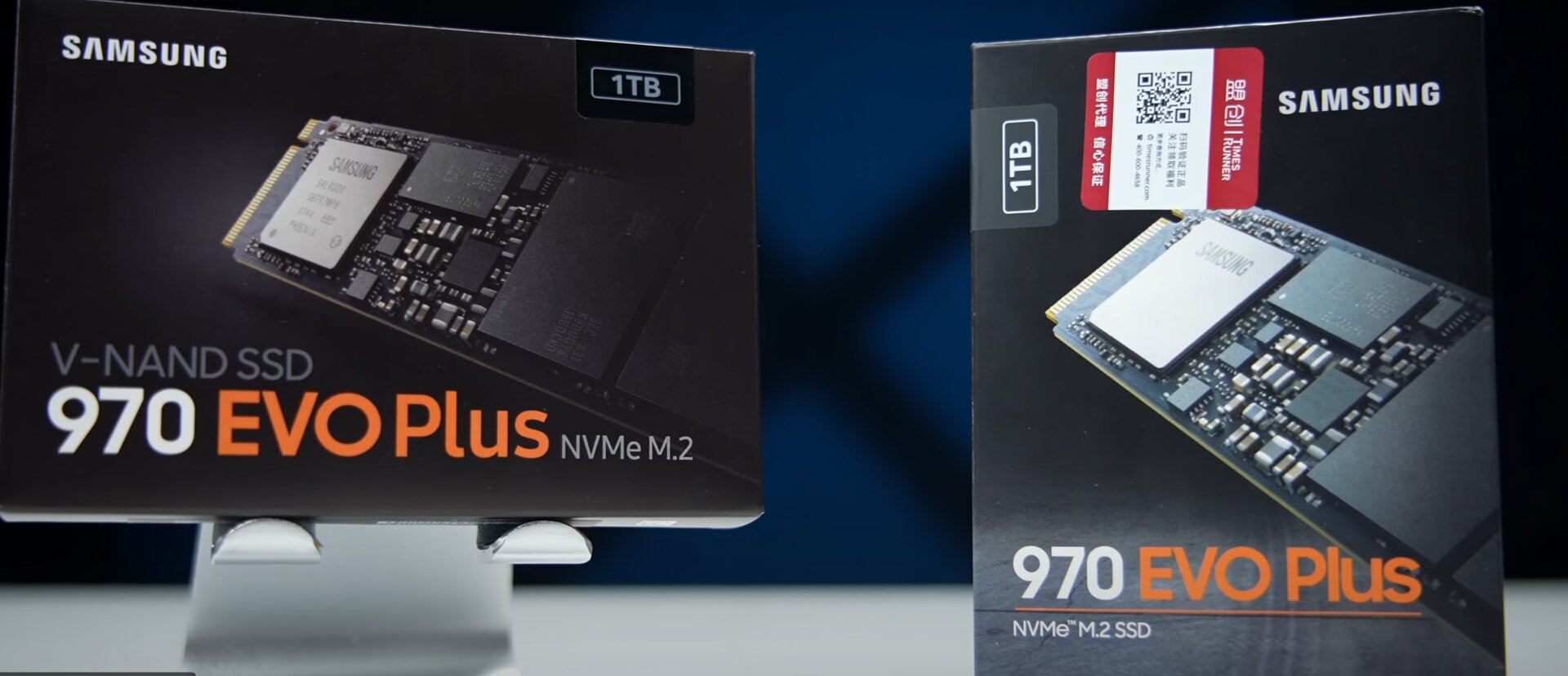 970 Evo Plus: alt left , new right (image: 潮 玩 客 (YouTube))
970 Evo Plus: alt left , new right (image: 潮 玩 客 (YouTube)) 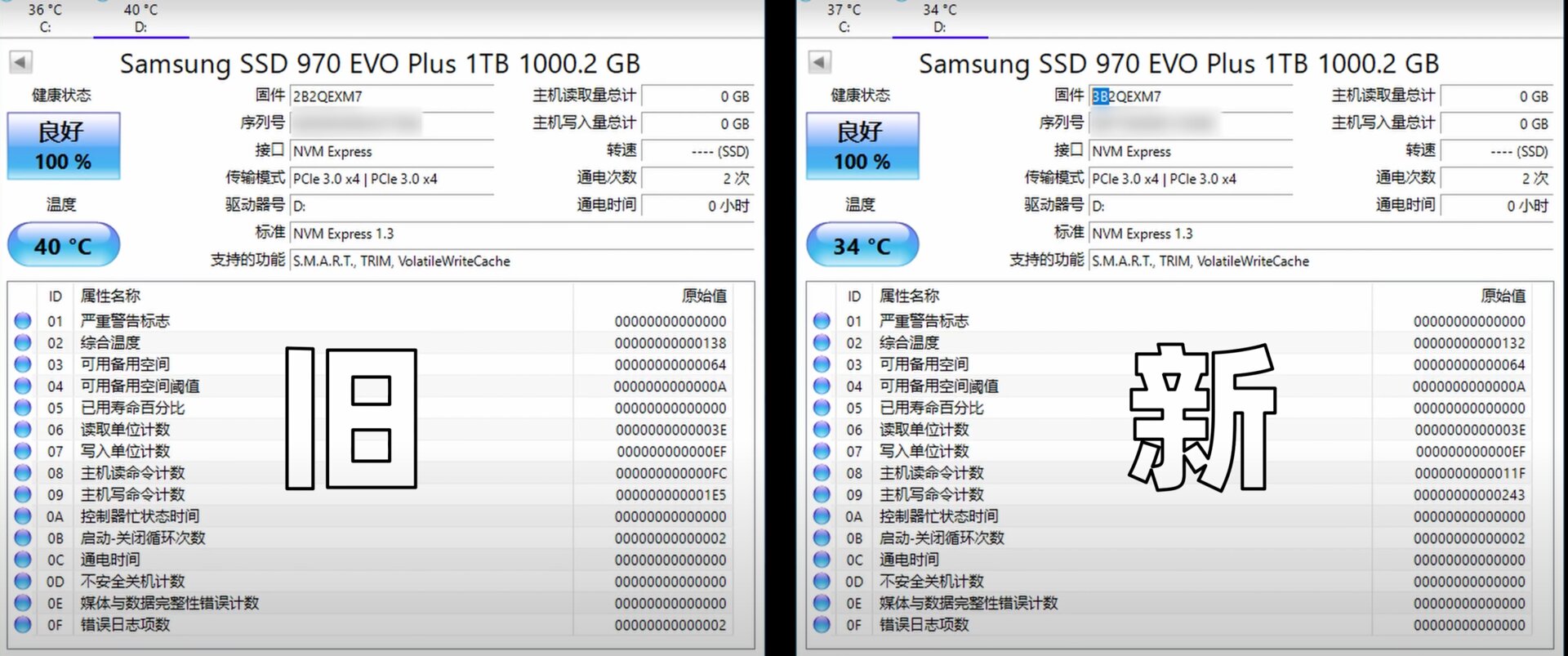 970 Evo Plus: old left, new right (image:潮 玩 客 (YouTube))
970 Evo Plus: old left, new right (image:潮 玩 客 (YouTube)) Performance sometimes better, sometimes worse
The benchmarks carried out show a diverse picture for the performance comparison of the new with the old 970 Evo Plus. For example, the new version with the Elpis controller achieves better results overall in CrystalDiskMark and in the AS SSD benchmark. The significantly higher rate of just under 82 MB/s for the RND4K Q1T1 is noticeable, while the old version only achieves around 56 MB/s. The AS SSD benchmark also confirms that the new version has a higher 4K performance, but poorer latencies. There are only minor differences in the copy tests of the software, but overall they are in favor of the old version.
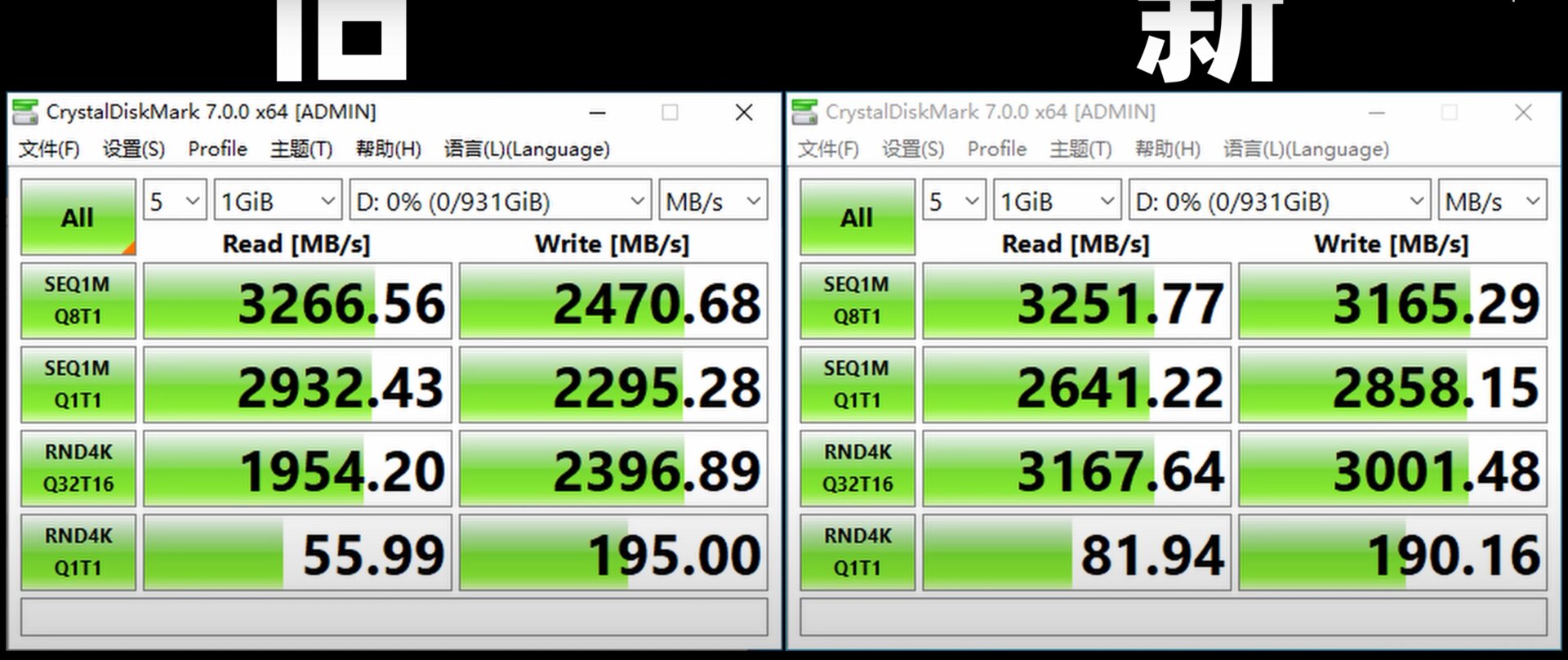 970 Evo Plus: old left, new right (image: 潮 玩 客 (YouTube))
970 Evo Plus: old left, new right (image: 潮 玩 客 (YouTube)) 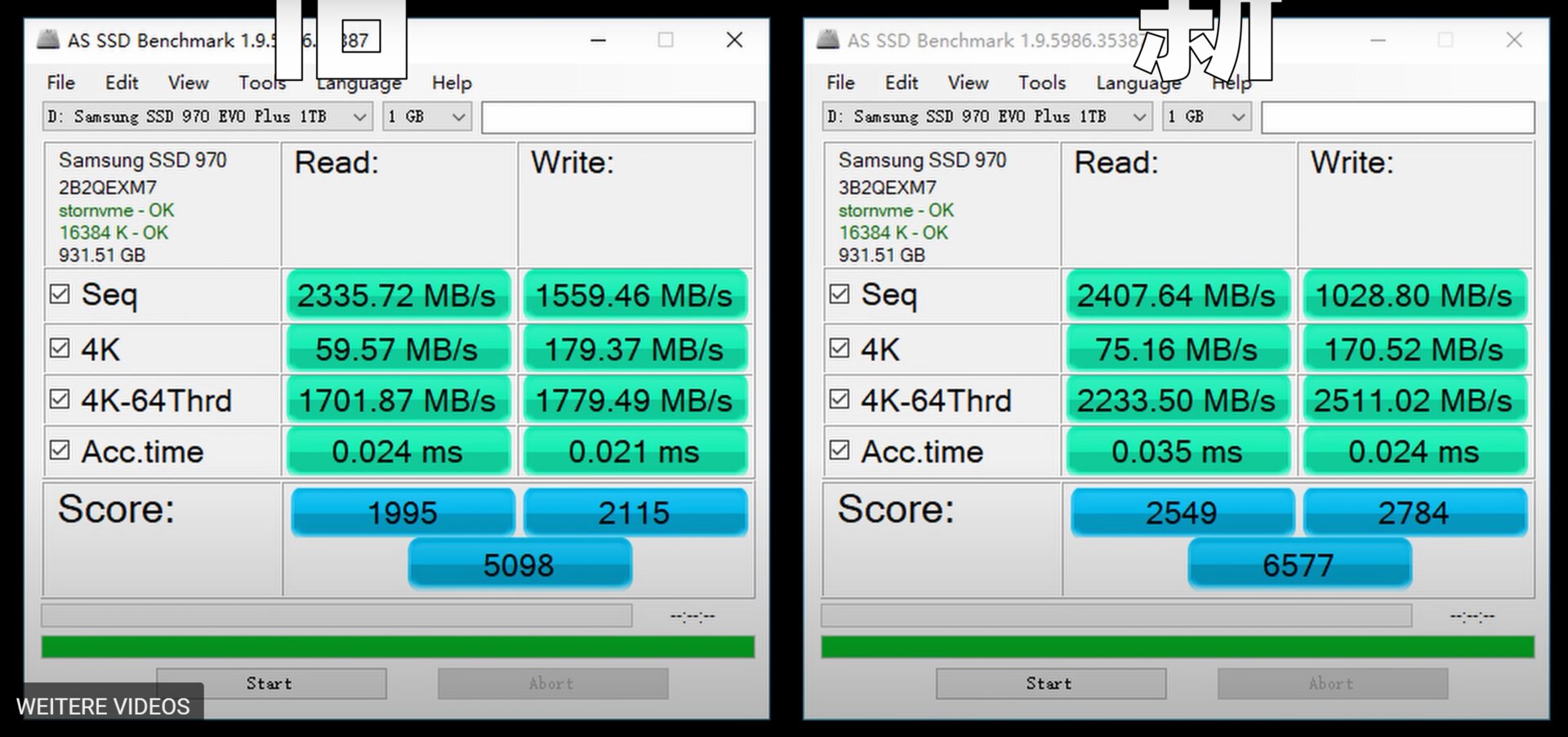 970 Evo Plus: old left, new right (image: 潮 玩 客 (YouTube))
970 Evo Plus: old left, new right (image: 潮 玩 客 (YouTube)) 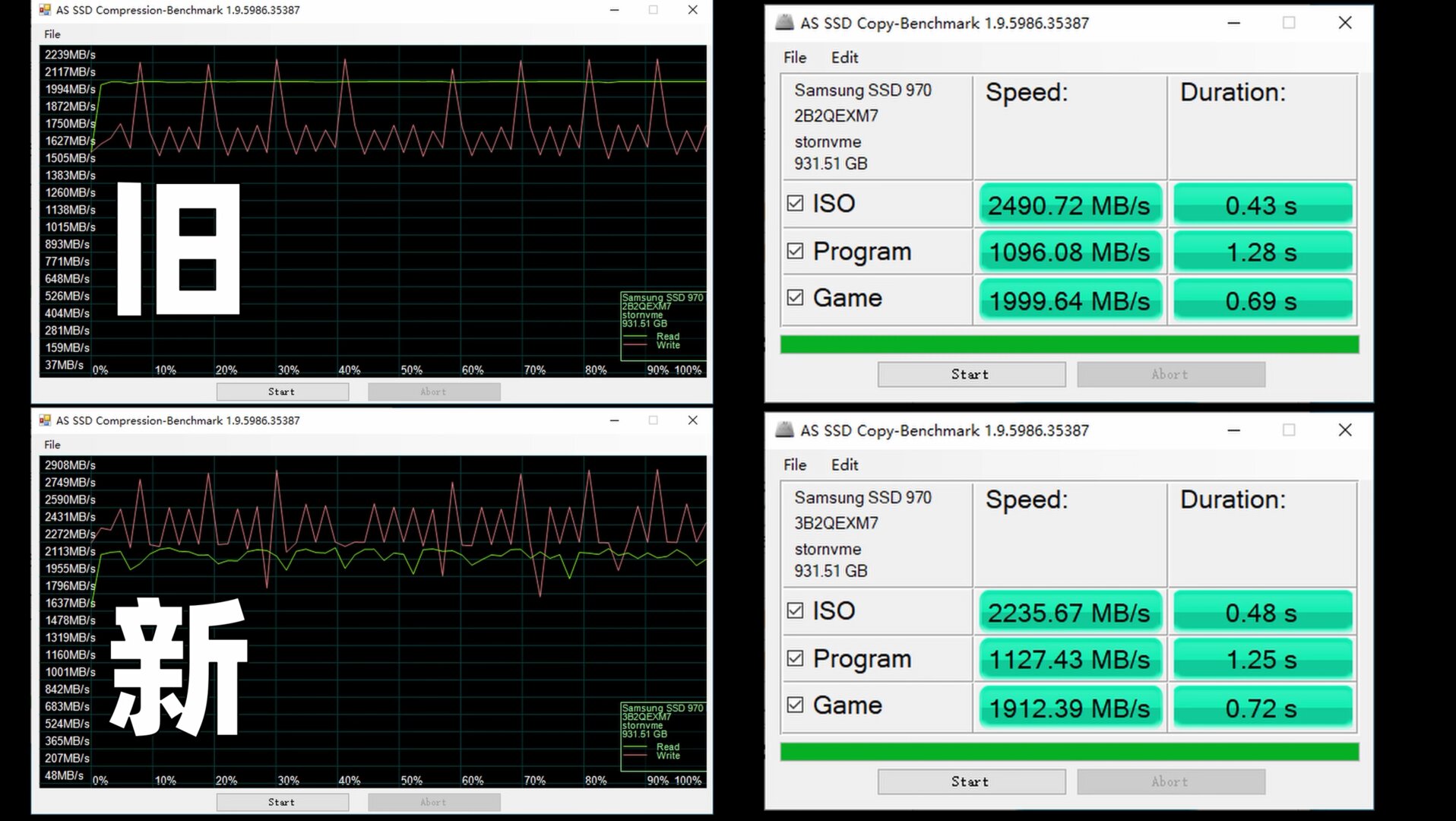 970 Evo Plus: old above, new below (image: 潮 玩 客 (YouTube))
970 Evo Plus: old above, new below (image: 潮 玩 客 (YouTube)) There is a massive difference in the measurements of the continuous writing performance with the HD Tune Pro software. The old version starts at around 1,750 MB/s and drops to around 1,500 MB/s after a good 40 GB. Since Samsung specified the SLC cache at market launch with up to 42 GB, the observations match this statement.
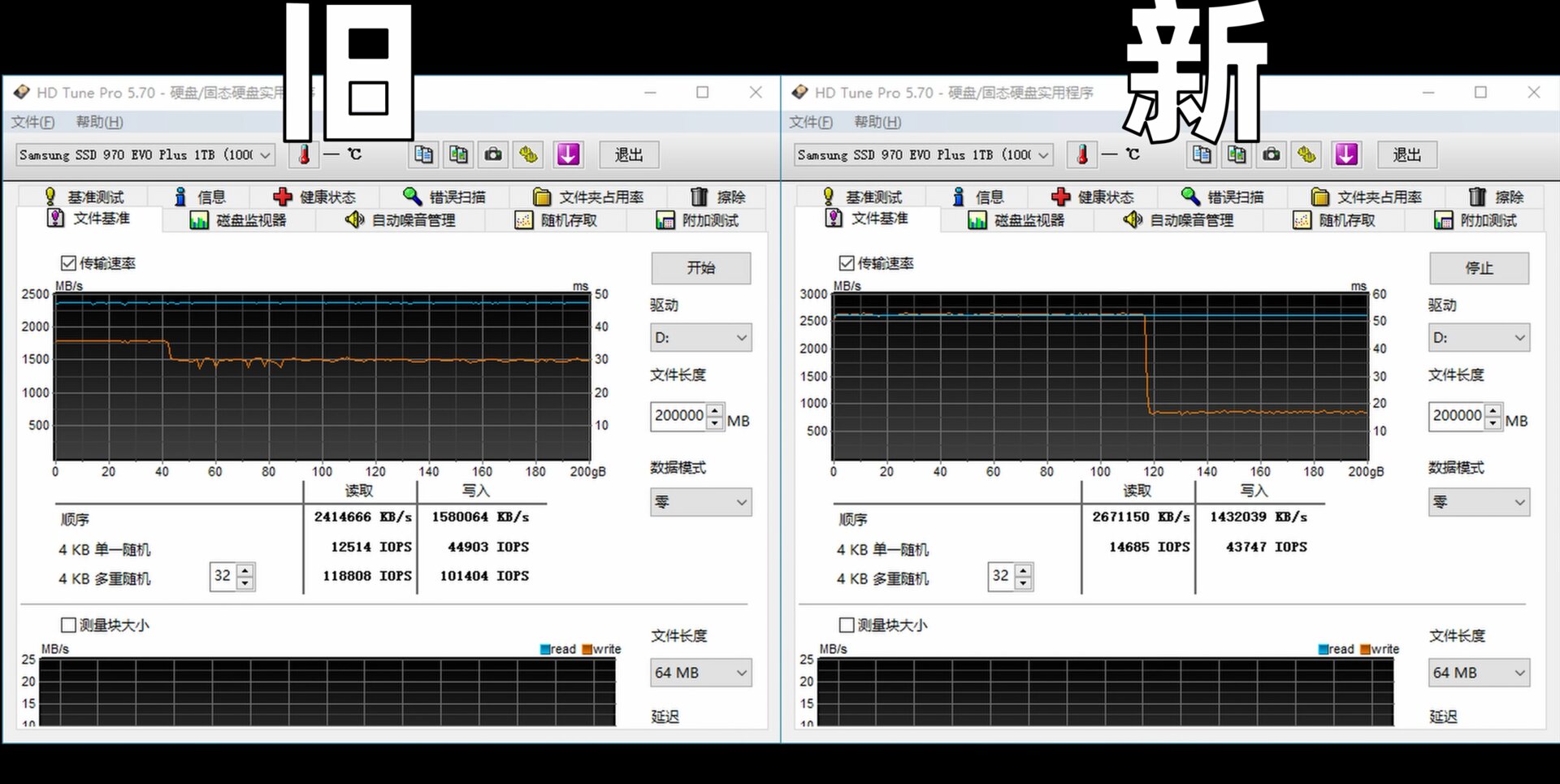 970 Evo Plus: old left, new right (image: 潮 玩 客(YouTube))
970 Evo Plus: old left, new right (image: 潮 玩 客(YouTube)) The new version behaves completely differently: The write rate starts at significantly higher & gt; 2,500 MB/s and remains at this level up to a write volume of around 115 GB. Only then does the performance drop, albeit noticeably at only around 800 MB/s. The measurements show a considerably larger and faster SLC mode. After the cache, however, the performance is almost halved. This suggests that the new NAND packages contain fewer memory chips overall, but that they have a higher storage capacity. The write throughput of an SSD after the SLC cache depends essentially on the number of memory chips, since the performance increases with many parallel accesses.
Tie in the practical transfer test
In practical use, it depends on the size of the files to be transferred in one go, whether the old or the new version writes faster. In the video, two files with a total size of 156 GB were written to the two 970 Evo Pluses for testing. The SLC mode of the new version, which has been available for much longer, is very clearly recognizable, which quickly gives it a head start. Towards the end, however, the performance drops to a little more than 800 MB/s, while the old version continues to write at over 1,500 MB/s. So in the end it practically amounts to a tie in terms of the duration of the process.
 970 Evo Plus: old left, new right (image: 潮 玩 客 (YouTube))
970 Evo Plus: old left, new right (image: 潮 玩 客 (YouTube)) 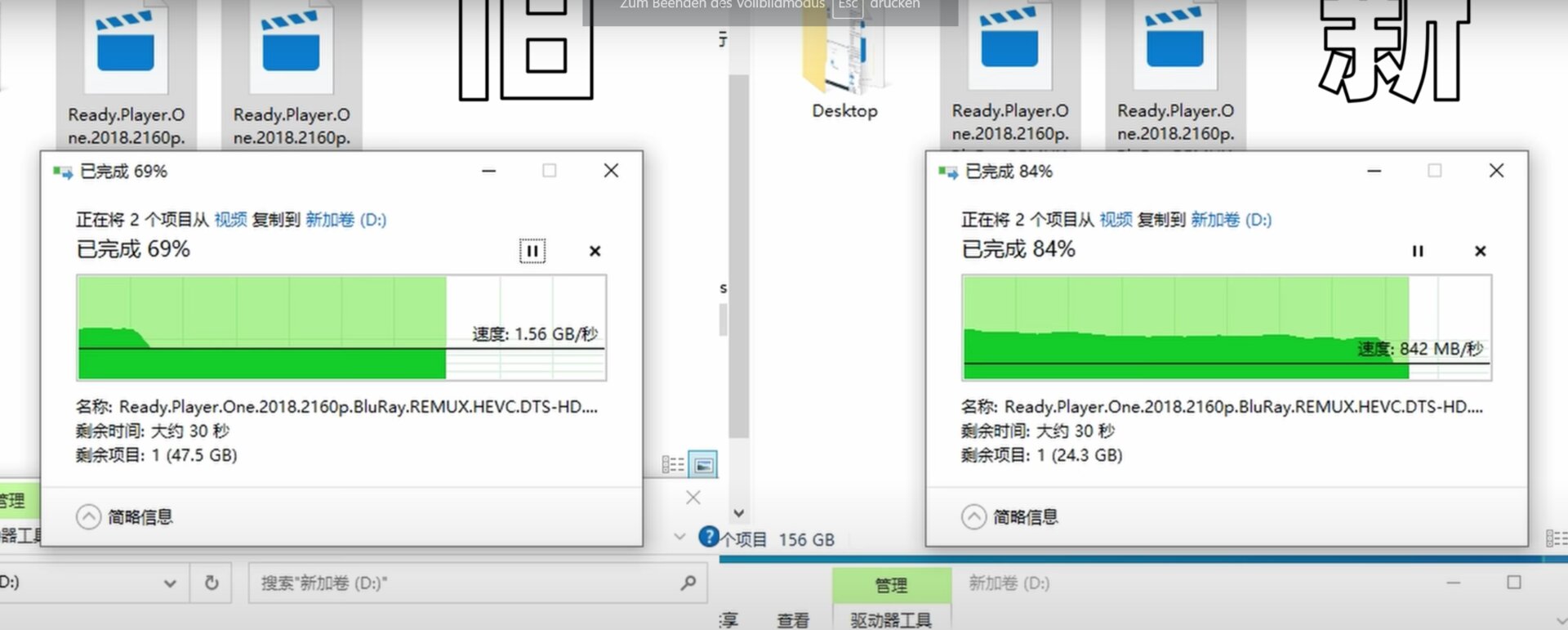 970 Evo Plus: old left, new right (image: 潮 玩 客 (YouTube))
970 Evo Plus: old left, new right (image: 潮 玩 客 (YouTube)) For even larger transfers, however, the old version would be the faster Continuous transfer rate clearly take the lead. The advantages of the new version are up to 115 GB.
Further tests, which also include temperature measurements, can be seen in the video. The new version with Elpis controller will therefore be a bit warmer.
The change is more visible at Samsung
< p class = "p text-width">The (secret) change of SSD components is common practice nowadays. As long as the properties of the product are not significantly impaired and the change is evident to customers, this is not a problem. At Samsung, the new version can now be identified at least by means of the packaging and the product numbers before the purchase. In addition, a performance disadvantage should only be noticeable for very large write transfers. Samsung has already adjusted the official data sheet. The footnotes no longer indicate the performance in SLC mode (TurboWrite).
 Data sheets for the 970 Evo Plus (left 2.0, right 3.0)
Data sheets for the 970 Evo Plus (left 2.0, right 3.0) Nevertheless, it would have been desirable to draw more attention to and inform about the new version before it was introduced. How it can be done better was demonstrated a few years ago with the SATA-SSD 850 Evo in a new edition (V2). However, there were no disadvantages with the new variant at the time, only advantages.
A lot of criticism for Crucial and WD
In the most recent examples from other manufacturers, things are a bit different: The change in the Crucial P2 SSD from TLC to QLC NAND reduces performance massively, especially in practice, and should also affect the durability beyond the unchanged warranty conditions. Crucial had not ruled out a later switch to QLC, but it is not clear to customers which version they are purchasing in stores.
With a new version of the WD Blue SN550 The writing performance in TLC mode is similar to that of the Samsung 970 Evo Plus, which is significantly lower than that of the old version. So far, however, it is unclear whether customers can distinguish between the versions before buying.
The approach of Crucial as well as Western Digital in the examples mentioned did not only care for readers of ComputerBase , but worldwide for many critical voices.
The editorial team thanks community member “TP555” for pointing this out to this news.

